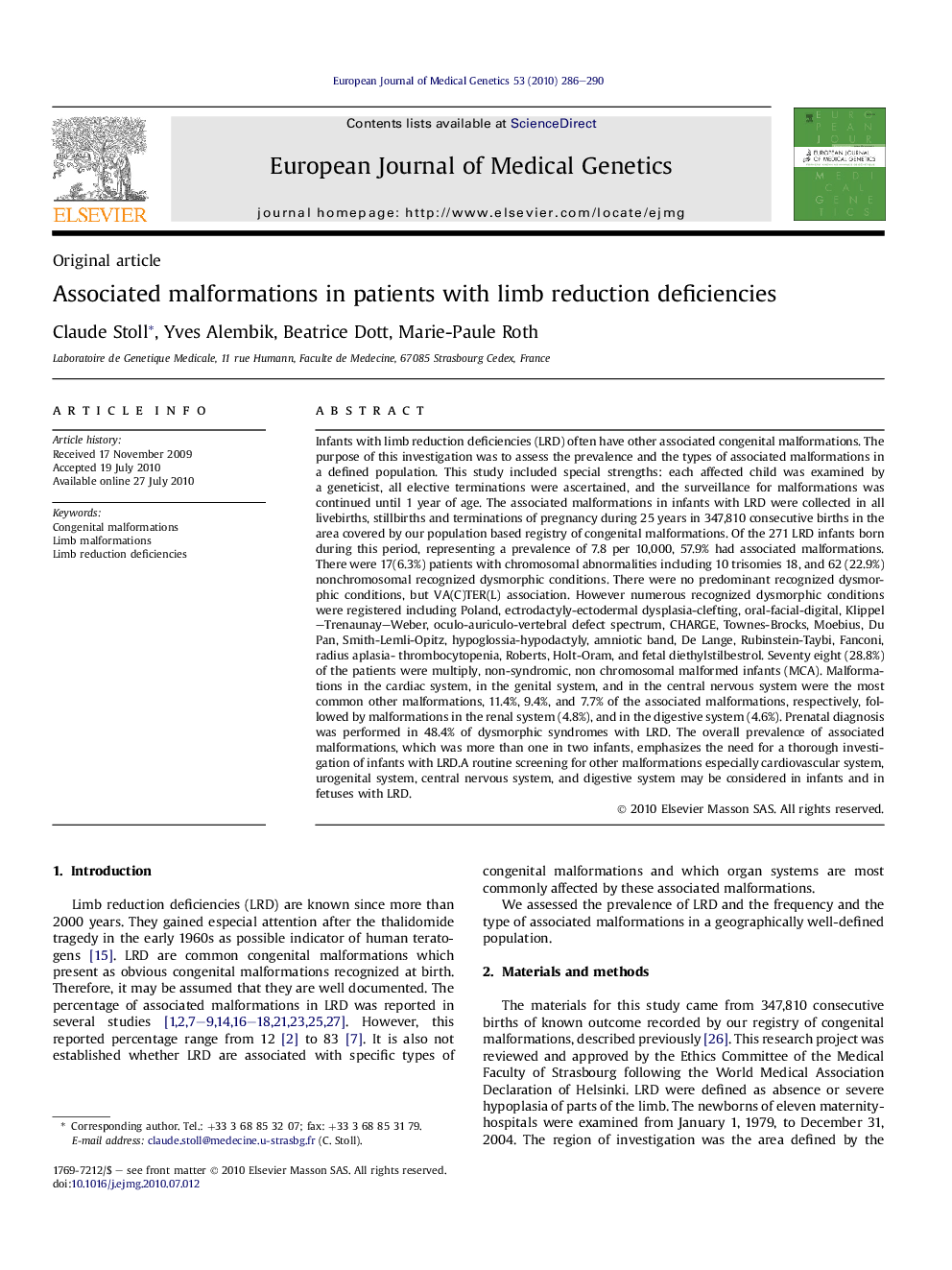| کد مقاله | کد نشریه | سال انتشار | مقاله انگلیسی | نسخه تمام متن |
|---|---|---|---|---|
| 2814038 | 1569524 | 2010 | 5 صفحه PDF | دانلود رایگان |

Infants with limb reduction deficiencies (LRD) often have other associated congenital malformations. The purpose of this investigation was to assess the prevalence and the types of associated malformations in a defined population. This study included special strengths: each affected child was examined by a geneticist, all elective terminations were ascertained, and the surveillance for malformations was continued until 1 year of age. The associated malformations in infants with LRD were collected in all livebirths, stillbirths and terminations of pregnancy during 25 years in 347,810 consecutive births in the area covered by our population based registry of congenital malformations. Of the 271 LRD infants born during this period, representing a prevalence of 7.8 per 10,000, 57.9% had associated malformations. There were 17(6.3%) patients with chromosomal abnormalities including 10 trisomies 18, and 62 (22.9%) nonchromosomal recognized dysmorphic conditions. There were no predominant recognized dysmorphic conditions, but VA(C)TER(L) association. However numerous recognized dysmorphic conditions were registered including Poland, ectrodactyly-ectodermal dysplasia-clefting, oral-facial-digital, Klippel–Trenaunay–Weber, oculo-auriculo-vertebral defect spectrum, CHARGE, Townes-Brocks, Moebius, Du Pan, Smith-Lemli-Opitz, hypoglossia-hypodactyly, amniotic band, De Lange, Rubinstein-Taybi, Fanconi, radius aplasia- thrombocytopenia, Roberts, Holt-Oram, and fetal diethylstilbestrol. Seventy eight (28.8%) of the patients were multiply, non-syndromic, non chromosomal malformed infants (MCA). Malformations in the cardiac system, in the genital system, and in the central nervous system were the most common other malformations, 11.4%, 9.4%, and 7.7% of the associated malformations, respectively, followed by malformations in the renal system (4.8%), and in the digestive system (4.6%). Prenatal diagnosis was performed in 48.4% of dysmorphic syndromes with LRD. The overall prevalence of associated malformations, which was more than one in two infants, emphasizes the need for a thorough investigation of infants with LRD.A routine screening for other malformations especially cardiovascular system, urogenital system, central nervous system, and digestive system may be considered in infants and in fetuses with LRD.
Journal: European Journal of Medical Genetics - Volume 53, Issue 5, September–October 2010, Pages 286–290